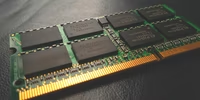Quando se trata de servidores é comum que a instalação dos sistemas operacionais sejam feitas em modo texto, remota ou através de ferramentas de automação. Por isso acredito que seja importante poder conhecer as telas de todo processo sempre que possível.
Especificações que vamos usar para o exemplo:
vnet0 = network interface
192.0.2.10/24 = ip address
192.0.2.1 = default gateway
server01 = hostname
{0} ok boot cdrom
Boot device: /virtual-devices@100/channel-devices@200/disk@1 File and args:
SunOS Release 5.10 Version Generic_147440-01 64-bit
Copyright (c) 1983, 2011, Oracle and/or its affiliates. All rights reserved.
Configuring devices.
Using RPC Bootparams for network configuration information.
Attempting to configure interface vnet0...
Skipped interface vnet0
Setting up Java. Please wait...
Serial console, reverting to text install
Beginning system identification...
Searching for configuration file(s)...
Search complete.
Discovering additional network configuration...
Select a Language
0. English
1. Brazilian Portuguese
2. French
3. German
4. Italian
5. Japanese
6. Korean
7. Simplified Chinese
8. Spanish
9. Swedish
10. Traditional Chinese
Please make a choice (0 - 10), or press h or ? for help: 0
What type of terminal are you using?
1) ANSI Standard CRT
2) DEC VT52
3) DEC VT100
4) Heathkit 19
5) Lear Siegler ADM31
6) PC Console
7) Sun Command Tool
8) Sun Workstation
9) Televideo 910
10) Televideo 925
11) Wyse Model 50
12) X Terminal Emulator (xterms)
13) CDE Terminal Emulator (dtterm)
14) Other
Type the number of your choice and press Return: 3
Completing system identification...
in.rdisc: No interfaces up
Dependendo do teclado o F2 não funciona, não se preocupe utilize a sequência ESC + 2.
# The Solaris Installation Program #############################################
The Solaris installation program is divided into a series of short sections
where you'll be prompted to provide information for the installation. At
the end of each section, you'll be able to change the selections you've
made before continuing.
About navigation...
- The mouse cannot be used
- If your keyboard does not have function keys, or they do not
respond, press ESC; the legend at the bottom of the screen
will change to show the ESC keys to use for navigation.
################################################################################
Esc-2_Continue Esc-6_Help
# Identify This System #########################################################
On the next screens, you must identify this system as networked or
non-networked, and set the default time zone and date/time.
If this system is networked, the software will try to find the information
it needs to identify your system; you will be prompted to supply any
information it cannot find.
> To begin identifying this system, press F2.
################################################################################
Esc-2_Continue Esc-6_Help
# Network Connectivity #########################################################
Specify Yes if the system is connected to the network by one of the Solaris
or vendor network/communication Ethernet cards that are supported on the
Solaris CD. See your hardware documentation for the current list of
supported cards.
Specify No if the system is connected to a network/communication card that
is not supported on the Solaris CD, and follow the instructions listed under
Help.
Networked
#########
[X] Yes
[ ] No
################################################################################
Esc-2_Continue Esc-6_Help
# DHCP for vnet0 ###############################################################
Specify whether or not this network interface should use DHCP to configure
itself. Choose Yes if DHCP is to be used, or No if the network interface is
to be configured manually.
NOTE: DHCP support will not be enabled, if selected, until after the system
reboots.
Use DHCP for vnet0
##################
[ ] Yes
[X] No
################################################################################
Esc-2_Continue Esc-6_Help
# Host Name for vnet0 ##########################################################
Enter the host name which identifies this system on the network. The name
must be unique within your domain; creating a duplicate host name will cause
problems on the network after you install Solaris.
A host name must have at least one character; it can contain letters,
digits, and minus signs (-).
Host name for vnet0 server01
################################################################################
Esc-2_Continue Esc-6_Help
# IP Address for vnet0 #########################################################
Enter the Internet Protocol (IP) address for this network interface. It
must be unique and follow your site's address conventions, or a
system/network failure could result.
IP addresses contain four sets of numbers separated by periods (for example
129.200.9.1).
IP address for vnet0 192.0.2.10
################################################################################
Esc-2_Continue Esc-6_Help
# Subnet for vnet0 #############################################################
On this screen you must specify whether this system is part of a subnet. If
you specify incorrectly, the system will have problems communicating on the
network after you reboot.
> To make a selection, use the arrow keys to highlight the option and
press Return to mark it [X].
System part of a subnet
#######################
[X] Yes
[ ] No
################################################################################
Esc-2_Continue Esc-6_Help
# Netmask for vnet0 ############################################################
On this screen you must specify the netmask of your subnet. A default
netmask is shown; do not accept the default unless you are sure it is
correct for your subnet. A netmask must contain four sets of numbers
separated by periods (for example 255.255.255.0).
Netmask for vnet0 255.255.255.0
################################################################################
Esc-2_Continue Esc-6_Help
# IPv6 for vnet0 ###############################################################
Specify whether or not you want to enable IPv6, the next generation Internet
Protocol, on this network interface. Enabling IPv6 will have no effect if
this machine is not on a network that provides IPv6 service. IPv4 service
will not be affected if IPv6 is enabled.
> To make a selection, use the arrow keys to highlight the option and
press Return to mark it [X].
Enable IPv6 for vnet0
#####################
[ ] Yes
[X] No
Please wait...
################################################################################
Esc-2_Continue Esc-6_Help
# Set the Default Route for vnet0 ##############################################
To specify the default route, you can let the software try to detect one
upon reboot, you can specify the IP address of the router, or you can choose
None. Choose None if you do not have a router on your subnet.
> To make a selection, use the arrow keys to select your choice and press
Return to mark it [X].
Default Route for vnet0
##########################
[ ] Detect one upon reboot
[X] Specify one
[ ] None
################################################################################
Esc-2_Continue Esc-6_Help
# Default Route IP Address for vnet0 ###########################################
Enter the IP address of the default route. This entry will be placed in the
/etc/defaultrouter file and will be the default route after you reboot
(example 129.146.89.225).
Router IP Address for vnet0 192.0.2.1
################################################################################
Esc-2_Continue Esc-6_Help
# Confirm Information for vnet0 ################################################
> Confirm the following information. If it is correct, press F2;
to change any information, press F4.
Networked: Yes
Use DHCP: No
Host name: server01
IP address: 192.0.2.10
System part of a subnet: Yes
Netmask: 255.255.255.0
Enable IPv6: No
Default Route: Specify one
Router IP Address: 192.0.2.1
################################################################################
Esc-2_Continue Esc-4_Change Esc-6_Help
# Configure Security Policy: ###################################################
Specify Yes if the system will use the Kerberos security mechanism.
Specify No if this system will use standard UNIX security.
Configure Kerberos Security
###########################
[ ] Yes
[X] No
################################################################################
Esc-2_Continue Esc-6_Help
# Confirm Information ##########################################################
> Confirm the following information. If it is correct, press F2;
to change any information, press F4.
Configure Kerberos Security: No
################################################################################
Esc-2_Continue Esc-4_Change Esc-6_Help
# Name Service #################################################################
On this screen you must provide name service information. Select the name
service that will be used by this system, or None if your system will either
not use a name service at all, or if it will use a name service not listed
here.
> To make a selection, use the arrow keys to highlight the option
and press Return to mark it [X].
Name service
############
[ ] NIS+
[ ] NIS
[ ] DNS
[ ] LDAP
[X] None
################################################################################
Esc-2_Continue Esc-6_Help
# Confirm Information ##########################################################
> Confirm the following information. If it is correct, press F2;
to change any information, press F4.
Name service: None
################################################################################
Esc-2_Continue Esc-4_Change Esc-6_Help
# NFSv4 Domain Name ############################################################
NFS version 4 uses a domain name that is automatically derived from the
system's naming services. The derived domain name is sufficient for most
configurations. In a few cases, mounts that cross domain boundaries might
cause files to appear to be owned by "nobody" due to the lack of a common
domain name.
The current NFSv4 default domain is: ""
NFSv4 Domain Configuration
##############################################
[X] Use the NFSv4 domain derived by the system
[ ] Specify a different NFSv4 domain
################################################################################
Esc-2_Continue Esc-6_Help
# Confirm Information for NFSv4 Domain #########################################
> Confirm the following information. If it is correct, press F2;
to change any information, press F4.
NFSv4 Domain Name: << Value to be derived dynamically >>
################################################################################
Esc-2_Continue Esc-4_Change Esc-6_Help
# Time Zone ####################################################################
On this screen you must specify your default time zone. You can specify a
time zone in three ways: select one of the continents or oceans from the
list, select other - offset from GMT, or other - specify time zone file.
> To make a selection, use the arrow keys to highlight the option and
press Return to mark it [X].
Continents and Oceans
##################################
- [ ] Africa
x [X] Americas
x [ ] Antarctica
x [ ] Arctic Ocean
x [ ] Asia
x [ ] Atlantic Ocean
x [ ] Australia
x [ ] Europe
v [ ] Indian Ocean
################################################################################
Esc-2_Continue Esc-6_Help
# Country or Region ############################################################
> To make a selection, use the arrow keys to highlight the option and
press Return to mark it [X].
Countries and Regions
###########################
^ [ ] Antigua & Barbuda
x [ ] Argentina
x [ ] Aruba
x [ ] Bahamas
x [ ] Barbados
x [ ] Belize
x [ ] Bolivia
x [X] Brazil
x [ ] Canada
x [ ] Cayman Islands
x [ ] Chile
x [ ] Colombia
v [ ] Costa Rica
################################################################################
Esc-2_Continue Esc-6_Help
# Time Zone ####################################################################
> To make a selection, use the arrow keys to highlight the option and
press Return to mark it [X].
Time zones
######################################################
^ [ ] Pernambuco
x [ ] Tocantins
x [ ] Alagoas, Sergipe
x [ ] Bahia
x [X] S & SE Brazil (GO, DF, MG, ES, RJ, SP, PR, SC, RS)
x [ ] Mato Grosso do Sul
x [ ] Mato Grosso
x [ ] W Para
x [ ] Rondonia
x [ ] Roraima
x [ ] E Amazonas
x [ ] W Amazonas
- [ ] Acre
################################################################################
Esc-2_Continue Esc-6_Help
# Date and Time ################################################################
> Accept the default date and time or enter
new values.
Date and time: 2012-04-16 15:31
Year (4 digits) : 2012
Month (1-12) : 04
Day (1-31) : 16
Hour (0-23) : 15
Minute (0-59) : 31
################################################################################
Esc-2_Continue Esc-6_Help
# Confirm Information ##########################################################
> Confirm the following information. If it is correct, press F2;
to change any information, press F4.
Time zone: S & SE Brazil (GO, DF, MG, ES, RJ, SP, P>
(Brazil/East)
Date and time: 2012-04-16 15:31:00
################################################################################
Esc-2_Continue Esc-4_Change Esc-6_Help
# Root Password ################################################################
Please enter the root password for this system.
The root password may contain alphanumeric and special characters. For
security, the password will not be displayed on the screen as you type it.
> If you do not want a root password, leave both entries blank.
Root password: *********
Root password: *********
################################################################################
Esc-2_Continue Esc-6_Help
# Enabling remote services #####################################################
Would you like to enable network services for use by remote clients?
Selecting "No" provides a more secure configuration in
which Secure Shell is the only network service provided to
remote clients. Selecting "Yes" enables a larger set of
services as in previous Solaris releases. If in doubt, it is
safe to select "No" as any services can be individually enabled
after installation.
Note: This choice only affects initial installs. It doesn't affect upgrades.
Remote services enabled
#######################
[ ] Yes
[X] No
################################################################################
Esc-2_Continue Esc-6_Help
# Provide Solaris Auto Registration Info: ######################################
To improve products and services, Oracle Solaris communicates configuration
data to Oracle after rebooting.
You can register your version of Oracle Solaris to capture this data for
your use, or the data is sent anonymously.
For information about what configuration data is communicated and how to
control this facility, see the Release Notes or
www.oracle.com/goto/solarisautoreg.
> Use the arrow keys to select the option and press Return to
mark it [X].
#################################################################
[ ] I would like to register using My Oracle Support information.
################################################################################
Esc-2_Continue Esc-6_Help
# Provide Solaris Auto Registration Info: ######################################
To send the configuration data anonymously, complete the following fields.
If using a proxy server, provide the proxy settings.
For information about what configuration data is communicated and how to
control this facility, see the Release Notes or
www.oracle.com/goto/solarisautoreg.
Proxy Server Host Name:
Proxy Server Port Number:
HTTP Proxy User Name:
HTTP Proxy Password:
################################################################################
Esc-2_Continue Esc-6_Help
System identification is completed.
System identification complete.
Starting Solaris installation program...
Executing JumpStart preinstall phase...
Searching for SolStart directory...
Checking rules.ok file...
Using begin script: install_begin
Using finish script: patch_finish
Executing SolStart preinstall phase...
Executing begin script "install_begin"...
Begin script install_begin execution completed.
# Solaris Interactive Installation #############################################
On the following screens, you can accept the defaults or you can customize
how Solaris software will be installed by:
- Selecting the type of Solaris software to install
- Selecting disks to hold software you've selected
- Selecting unbundled products to be installed with Solaris
- Specifying how file systems are laid out on the disks
After completing these tasks, a summary of your selections (called a
profile) will be displayed.
There are two ways to install your Solaris software:
- "Standard" installs your system from a standard Solaris Distribution.
Selecting "Standard" allows you to choose between initial install
and upgrade, if your system is upgradable.
- "Flash" installs your system from one or more Flash Archives.
################################################################################
F2_Standard F4_Flash F5_Exit F6_Help
# Eject a CD/DVD Automatically? ################################################
During the installation of Solaris software, you may be using one or more
CDs/DVDs. You can choose to have the system eject each CD/DVD automatically
after it is installed or you can choose to manually eject each CD/DVD.
[ ] Automatically eject CD/DVD
[X] Manually eject CD/DVD
################################################################################
F2_Continue F3_Go Back F5_Exit
# Reboot After Installation? ###################################################
After Solaris software is installed, the system must be rebooted. You can
choose to have the system automatically reboot, or you can choose to
manually reboot the system if you want to run scripts or do other
customizations before the reboot. You can manually reboot a system by using
the reboot(1M) command.
[X] Auto Reboot
[ ] Manual Reboot
################################################################################
F2_Continue F3_Go Back F5_Exit
# Initializing #################################################################
The system is being initialized.
Loading install media, please wait...
# License ######################################################################
You acknowledge that your use of this software is subject to (i) the
license terms that you accepted when you obtained a right to use this
software; or (ii) the license terms that you signed when you placed
your software order with us; or (iii) the license terms included in
hard copy form with the hardware that you acquired from us; or, if (i),
(ii) or (iii) are not applicable, then, (iv) the Oracle Electronic
Delivery Trial License Agreement (which you acknowledge that you have
read and understand), available at edelivery.oracle.com. Note: Software
downloaded for trial use or downloaded as replacement media may not be
used to update any unsupported software.
################################################################################
Esc-2_Accept License F5_Exit
# Select Geographic Regions ####################################################
Select the geographic regions for which support should be installed.
> [ ] Southern Africa
> [ ] Australasia
> [ ] Northern Africa
> [ ] Middle East
> [ ] Eastern Europe
> [ ] Southern Europe
V [/] South America
[ ] Argentina (ISO8859-1)
[ ] Bolivia (ISO8859-1)
[X] Brazil (ISO8859-1)
[ ] Chile (ISO8859-1)
[ ] Colombia (ISO8859-1)
[ ] Ecuador (ISO8859-1)
[ ] Paraguay (ISO8859-1)
[ ] Peru (ISO8859-1)
[ ] Spanish
Locale is selected. Press Return to deselect
################################################################################
Esc-2_Continue F3_Go Back F5_Exit F6_Help
# Select System Locale #########################################################
Select the initial locale to be used after the system has been installed.
[X] POSIX C ( C )
South America
[ ] Brazil (UTF-8) ( pt_BR.UTF-8 )
[ ] Brazil (ISO8859-1) ( pt_BR.ISO8859-1 )
################################################################################
Esc-2_Continue F3_Go Back F5_Exit F6_Help
# Additional Products ##########################################################
To scan for additional products, select the location you wish to scan.
Products found at the selected location that are in a Web Start Ready
install form will be added to the Products list.
Web Start Ready product scan location:
[X] None
[ ] CD/DVD
[ ] Network File System
Please wait ...
################################################################################
Esc-2_Continue F3_Go Back F5_Exit
# Choose Filesystem Type #######################################################
Select the filesystem to use for your Solaris installation
[X] UFS
[ ] ZFS
################################################################################
Esc-2_Continue F3_Go Back F5_Exit F6_Help
# Select Software ##############################################################
Select the Solaris software to install on the system.
NOTE: After selecting a software group, you can add or remove software by
customizing it. However, this requires understanding of software
dependencies and how Solaris software is packaged.
[ ] Entire Distribution plus OEM support ....... 6880.00 MB
[X] Entire Distribution ........................ 6838.00 MB
[ ] Developer System Support ................... 6647.00 MB
[ ] End User System Support .................... 5392.00 MB
[ ] Core System Support ........................ 1545.00 MB
[ ] Reduced Networking Core System Support ..... 1487.00 MB
Please wait ...
################################################################################
Esc-2_Continue F3_Go Back F4_Customize F5_Exit F6_Help
# Select Disks #################################################################
On this screen you must select the disks for installing Solaris software.
Start by looking at the Suggested Minimum field; this value is the
approximate space needed to install the software you've selected. Keep
selecting disks until the Total Selected value exceeds the Suggested Minimum
value.
NOTE: ** denotes current boot disk
Disk Device Available Space
=============================================================================
[X] c0d0 127908 MB (F4 to edit
)
Total Selected: 127908 MB
Suggested Minimum: 5377 MB
################################################################################
Esc-2_Continue F3_Go Back F4_Edit F5_Exit F6_Help
# Preserve Data? ###############################################################
Do you want to preserve existing data? At least one of the disks you've
selected for installing Solaris software has file systems or unnamed slices
that you may want to save.
################################################################################
Esc-2_Continue F3_Go Back F4_Preserve F5_Exit F6_Help
# Automatically Layout File Systems? ###########################################
Do you want to use auto-layout to automatically layout file systems?
Manually laying out file systems requires advanced system administration
skills.
################################################################################
F2_Auto Layout F3_Go Back F4_Manual Layout F5_Exit F6_Help
# File System and Disk Layout ##################################################
The summary below is your current file system and disk layout, based on the
information you've supplied.
NOTE: If you choose to customize, you should understand file systems, their
intended purpose on the disk, and how changing them may affect the operation
of the system.
File sys/Mnt point Disk/Slice Size
========================================================================
overlap c0d0s2 127908 MB
################################################################################
Esc-2_Continue F3_Go Back F4_Customize F5_Exit F6_Help
Para o layout do disco é possivel usar o padrão do sistema ou usar um customizado.
# Customize Disk: c0d0 #########################################################
Entry: Recommended: MB Minimum: MB
================================================================================
Slice Mount Point Size (MB)
0 / 7020
1 swap 10008
2 overlap 127908
3 /tmp 2016
4 /var 9000
5 /usr 9000
6 /opt 5004
7 / 85860
================================================================================
Capacity: 127908 MB
Allocated: 44028 MB
Free: 0 MB
################################################################################
F2_OK Esc-4_Options F5_Cancel F6_Help
# File System and Disk Layout ##################################################
The summary below is your current file system and disk layout, based on the
information you've supplied.
NOTE: If you choose to customize, you should understand file systems, their
intended purpose on the disk, and how changing them may affect the operation
of the system.
File sys/Mnt point Disk/Slice Size
========================================================================
/ c0d0s0 7020 MB
swap c0d0s1 10008 MB
overlap c0d0s2 127908 MB
/tmp c0d0s3 2016 MB
/var c0d0s4 9000 MB
/usr c0d0s5 9000 MB
/opt c0d0s6 5004 MB
/dados c0d0s7 85860 MB
################################################################################
Esc-2_Continue F3_Go Back F4_Customize F5_Exit F6_Help
# Mount Remote File Systems? ###################################################
Do you want to mount software from a remote file server? This may be
necessary if you had to remove software because of disk space problems.
################################################################################
Esc-2_Continue F3_Go Back F4_Remote Mounts F5_Exit F6_Help
# Profile ######################################################################
The information shown below is your profile for installing Solaris software.
It reflects the choices you've made on previous screens.
============================================================================
- Installation Option: Initial
x Boot Device: c0d0
x Root File System Type: UFS
x Client Services: None
x
x Locales: Brazil (ISO8859-1)
x System Locale: C ( C )
x
x Software: Solaris 10, Entire Distribution
x
x File System and Disk Layout: / c0d0s0 7020 MB
x swap c0d0s1 10008 MB
x /tmp c0d0s3 2016 MB
v /var c0d0s4 9000 MB
################################################################################
Esc-2_Begin Installation F4_Change F5_Exit F6_Help
# Warning ######################################################################
The following disk configuration condition(s) have been
detected. Errors must be fixed to ensure a successful
installation. Warnings can be ignored without causing the
installation to fail.
WARNING: CHANGING DEFAULT BOOT DEVICE
You have either explicitly changed the default boot device, or
accepted the default to "Reconfigure EEPROM". In either case,
the system's EEPROM will be changed so it will always boot
Solaris from the device that you've specified. If this is not
what you had in mind, go back to the disk selection screens and
change the "Reconfigure EEPROM" setting.
################################################################################
Esc-2_OK F5_Cancel
Preparing system for Solaris install
Configuring disk (c0d0)
- Creating Solaris disk label (VTOC)
Creating and checking file systems
- Creating / (c0d0s0)
- Creating /tmp (c0d0s3)
- Creating /var (c0d0s4)
- Creating /usr (c0d0s5)
- Creating /opt (c0d0s6)
- Creating /dados (c0d0s7)
Beginning Solaris software installation
00:00:00
################################################################################
Solaris Initial Install
MBytes Installed: 4121.60
MBytes Remaining: 0.00
Installing:
| | | | | |
0 20 40 60 80 100
################################################################################
Solaris 10 software installation succeeded
Customizing system files
- Mount points table (/etc/vfstab)
- Network host addresses (/etc/hosts)
- Environment variables (/etc/default/init)
Cleaning devices
Customizing system devices
- Physical devices (/devices)
- Logical devices (/dev)
Installing boot information
- Installing boot blocks (c0d0s0)
- Installing boot blocks (/dev/rdsk/c0d0s0)
- Updating system firmware for automatic rebooting




